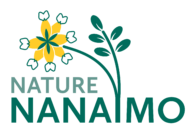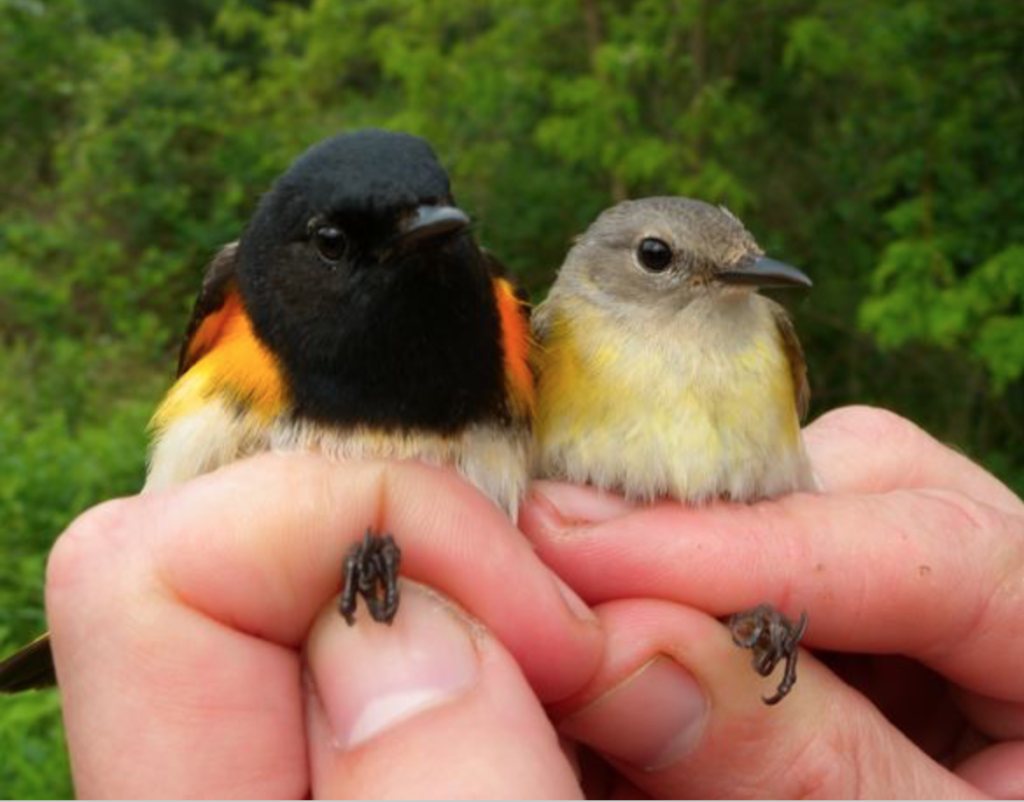VIU Science and Technology Lecture Series, March 20, 2019
Eric Demers, Department of Biology, Vancouver Island University
by Lance Nordstrom
Dr. Demers introduced his topic by describing the current status of breeding bird populations in Canada, noting that numbers have decreased 12% since 1970. About 40% of bird species are in decline. In particular, populations of shorebirds, grassland birds, and aerial insectivores are going down, while forest bird populations seem to be stable and those of raptors and water fowl are trending upwards. While pesticides are having an impact, cat predation and collisions with windows, vehicles, and transmission lines caused more than 95% of all mortality; the highest industrial causes of mortality were the electrical power and agriculture sectors. Conservation of these species is often hindered by a lack of information about their populations.
Only 22% of Canadian bird species spend the year in Canada. Most migrate to the United States or central America for the winter. Bird banding is a useful tool for studying and monitoring birds, as well as for tracking their movements. There are more than 30 bird banding stations in Canada. These stations use one band supplier, with the nine digit bands uniquely numbered to ensure accurate data recording. Permits for banding birds are issued by Environment Canada and the North American Bird Banding Council. The purposes of bird banding include the identification of individuals, determination of dispersal and migration patterns, calculation of life span and survival data, and the study of population dynamics. Longevity studies show that life spans are correlated with size, such that larger birds tend to live longer (see table below). Researchers use mark-recapture techniques to investigate population dynamics and to determine reproductive success, population structure and growth, survival, and mortality.
| Bird species of increasing size | Age (years) |
| Rufous hummingbird | 9 |
| Chestnut-backed chickadees | 10 |
| American robin | 14 |
| Great horned owl | 28 |
| Laysan albatross | 68 |
The VIU Bird Banding Project monitors migrant and resident birds. It provides practical training opportunities for undergraduate students and offers public demonstrations for the larger community. The banding takes place in Buttertubs marsh, a 53 acre urban park managed by the City of Nanaimo, Ducks Unlimited Canada, and the Nature Trust of BC. The site contains a mix of marsh, riparian, old-field, and upland forest habitats. Bird banding involves the capture, extraction, identification, processing, and release of individuals. The birds are caught in mist nets that are about 12 metres long, 2.5 metres high, and with a mesh size of 30 mm. The size of animals caught in these nets range from songbirds up to woodpeckers. Volunteers start work about 30 minutes before sunrise for 6 hour shifts. Nets are checked every 15-20 minutes and captured birds are transported to the processing area in bags. Processing of the birds includes biometrics (size, weight, etc.), as well as determining the approximate age, sex, and fat score (degree of fat on birds). Ageing is a highly technical skill that relies on plumage characteristics, moult patterns, and eye, bill, and mouth colour.
The project has continued from 2013 to present, with 30-60 banding days per year from April to October. More than 14,000 birds have been captured, representing 72 species. Over 150 VIU students and community volunteers have dedicated more than 12,000 hours to the project. On average, 60 birds are captured per day. The top six species of captured birds are: song sparrow, common yellow throats, American robin, spotted towee, Lincoln sparrow, and orange-crowned warbler. One spotted towee banded by volunteers at Buttertubs has been found in Oregon.
In addition to the bird banding project, Dr. Demers talked briefly about related work on tree swallow nest boxes and a Canada goose project. Twenty-four of 30 nest boxes were used by tree swallows in 2018. There were 135 eggs laid and 62 fledged young, representing an average of 2.3 young per pair. The Canada goose project, which is supported by the City of Nanaimo, tracks the abundance and movement of geese around the region. The geese were originally introduced for hunting and their numbers have been steadily increasing since 1974, when they were relatively rare. About 400 geese were banded and collared in 2016-17, and 60 sites are surveyed each month with over 2,000 sightings. Most geese stay between Nanaimo and Qualicum Beach, but some have dispersed to the northern part of Vancouver Island and others have moved south into Washington and Oregon.
Dr. Demers concluded his talk by inviting anyone who is interested in volunteering for the bird banding project to contact him by email at Eric.Demers@viu.ca. For more information on this general topic, check out the websites for Bird Studies Canada and the Vancouver Avian Research Centre.

